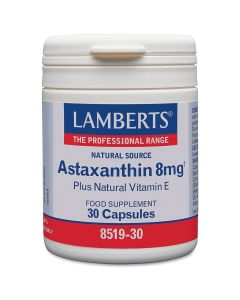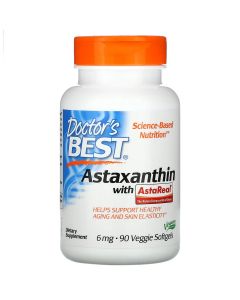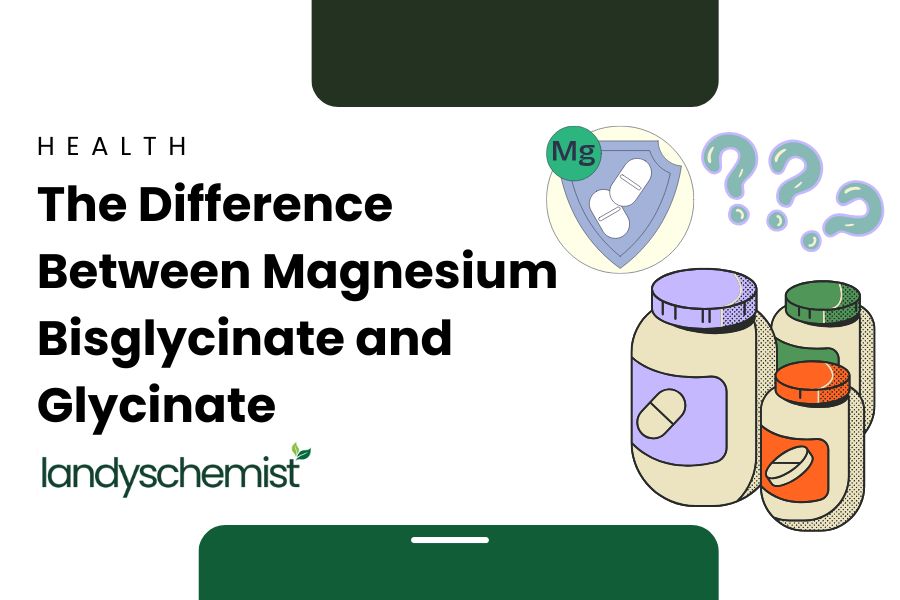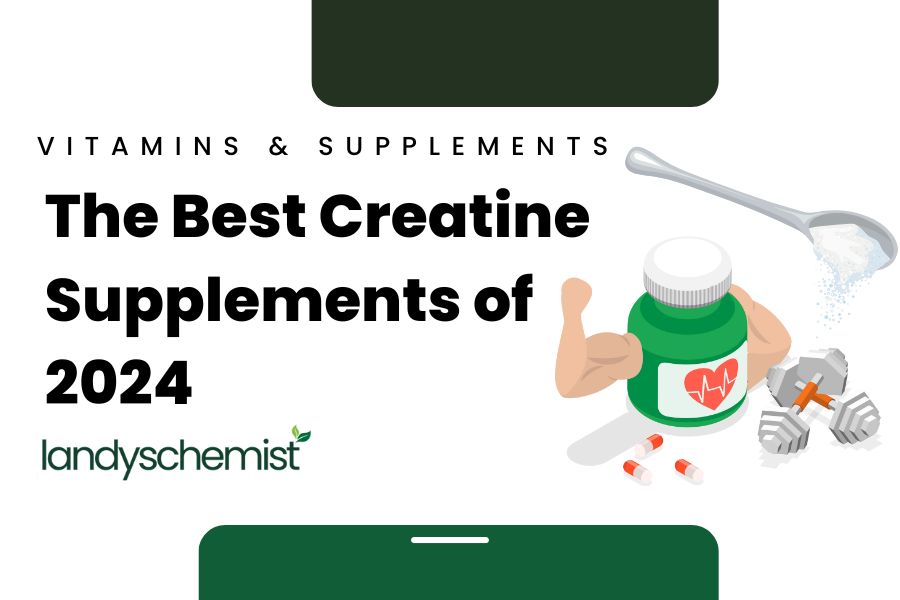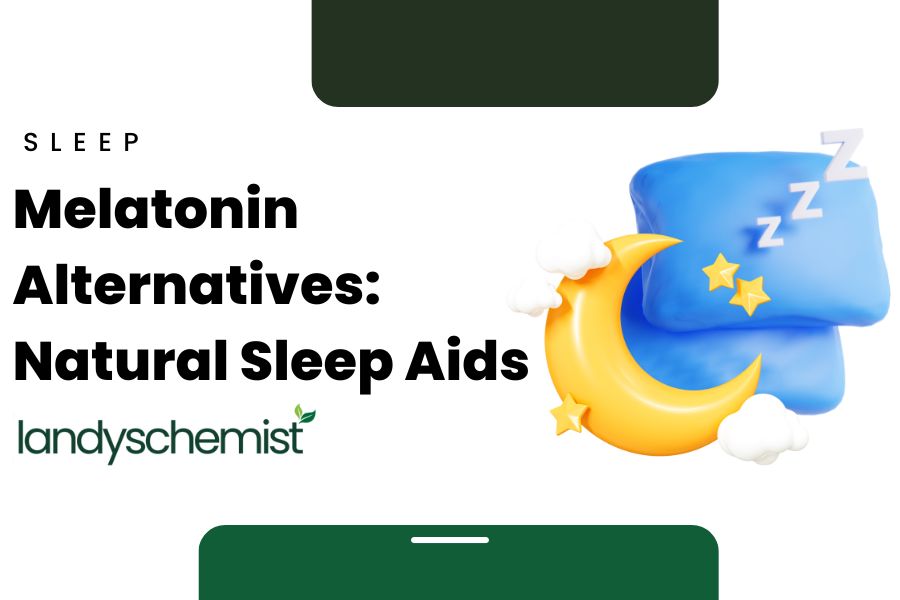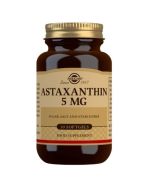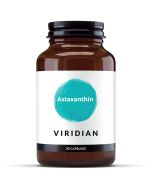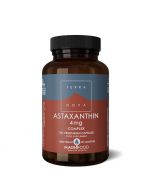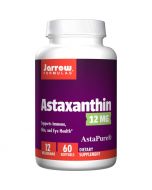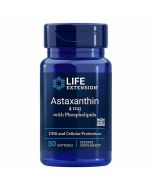
Is astaxanthin good for eye health?
Supporting and maintaining eye health is an important aspect of our overall well-being, often overlooked until problems start to arise. We are constantly exposing our eyes to strain through constant screen time and environmental stressors making maintaining eye health more important than ever.
Astaxanthin is a potent antioxidant with anti-inflammatory and antiapoptotic activities which may offer promising benefits to support our eyes. Several studies [1] have indicated that due to its unique molecular structure and properties, Astaxanthin may have numerous positive and beneficial effects on eye health including protection against oxidative stress, improvement in eye strain, protection against UV light as well as reducing inflammation in the eyes.
In this blog, we explore the ways astaxanthin can help to safeguard our vision, explore its benefits and how you can integrate this powerful supplement into your daily routine.
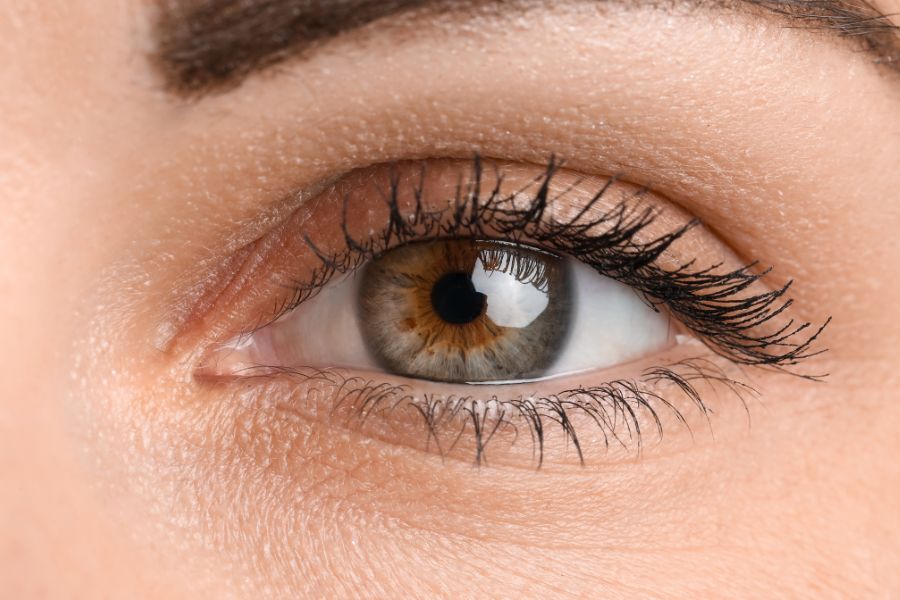
What is Astaxanthin and what does it do?
Astaxanthin is a naturally occurring red carotenoid pigment that can be found in algae and yeast and is often why crustaceans like crab and lobster and fish like salmon appear red/pink.
Astaxanthin is a pure antioxidant that is exceptionally powerful, with a higher antioxidant capacity [2] (10x more) than Beta-Carotene, Zeaxanthin and lutein, and 100x higher [3] than alpha-tocopherol.
As an antioxidant, astaxanthin exhibits the ability to neutralise free radicals and combat oxidative stress which can damage our cells. This attribute contributes to a variety of health benefits, including enhanced skin health [4], improved joint health through anti-inflammatory effects [5], support for our cardiovascular health [6] and boosted immune function [7]. Particularly notable, is astaxanthins ability to support eye health and protect against UV damage.
Astaxanthin and eye health
Our eyes are under constant oxidative stress from various sources like UV and blue light, computer screens, pollution, allergens, strain, poor sleep, and nutritional deficiencies. This oxidative stress [8] arises when the body’s antioxidant defences are overwhelmed, leading to the production of reactive oxygen species (ROS) or free radicals, which can damage cellular DNA and structures.
Several clinical trials [9] highlight the potential astaxanthin has in the prevention and treatment of various ocular diseases affecting both the front and back of the eye such as age-related macular degeneration (AMD) due to its antioxidant [10] , anti-inflammatory and antiapoptotic activity.
It has the ability to cross the blood-retina barrier [11], offering protection against the oxidative stress that light exposure causes on every layer of the eye. This exposure can lead to cell death or dysfunction, potentially causing conditions like keratopathies, cataracts [12], and retinopathies as well as eye strain and dry eyes [13]. By preventing ROS formation and effectively scavenging harmful radicals, astaxanthin may help to slow the progression of these diseases.
Astaxanthin also offers superior light absorption [14] capabilities across a wider range of wavelengths compared to other carotenoids, enhancing its ability to shield the retinas from damage caused by light exposure.
Astaxanthin also works synergistically with other carotenoids like lutein and zeaxanthin which are also beneficial for their protective effects against oxidative damage.
Benefits of taking Astaxanthin for the eyes:
Antioxidant activity:
The unique chemical structure of astaxanthin allows it to neutralise many types of free radicals [15] as well as stretch across the entire membrane to protect the cells from oxidative damage. By protecting the delicate structures of the eye, particularly the retina, astaxanthin can help to maintain cellular integrity and prevent the degeneration that can lead to age-related macular degeneration and more.
Astaxanthin’s capacity penetrate the blood-retina barrier [16] allows it to provide high protection against oxidative stress. Research has also shown that astaxanthin effectively lowers levels of oxidative markers whilst boosting the presence of antioxidant substances like Superoxide dismutase (SOD) [17] within the body. This action enhances its protective impact, directly benefiting eye health by preserving cellular health and function.
Anti-inflammatory activity:
Research [18] has shown that astaxanthin may help to mitigate the adverse effects of oxidative stress by suppressing the expression of various pro-inflammatory biomarkers including IL-1β, IL-6 and TNF-α [19] in an animal model. By reducing inflammation in the eye, astaxanthin may be beneficial for helping to prevent conditions that arise from chronic inflammation such as uveitis [20].
Reduction in eye strain:
Astaxanthin helps to reduce eye strain by providing protective effects on photoreceptor cells [21] that are exposed to blue light, a common source of visual strain, particularly in individuals who spend long hours in front of digital screens.
By protecting these sensitive cells in the retina, astaxanthin prevents the damage [22] typically caused by prolonged exposure which can help to alleviate symptoms of eye strain including dryness, soreness, and blurred vision.
Improve dry eyes:
Astaxanthin helps to improve the condition of dry eyes [23] by promoting capillary blood flow [22] to the retina, enhancing oxygen and nutrient delivery to the eye tissues as well as reducing inflammation and oxidative stress. This increased blood circulation helps to nourish the eyes, alleviating dryness, eye strain [24] and discomfort. By improving retinal blood flow, astaxanthin allows the essential nutrients and oxygen to be sufficiently delivered to the eye supporting the health of the eye and tear glands.
How effective is Astaxanthin for eye health?
Astaxanthin’s unique molecular structure enables it to provide extensive protection against oxidative stress throughout the entire cell membrane. Being lipophilic [25], astaxanthin naturally gravitates towards fats, which are in abundance in the retina, allowing it to provide effective protection for the eye.
As both an antioxidant and anti-inflammatory agent, astaxanthin has the potential to safeguard the photoreceptor cells within the eyes. It enhances blood circulation to the retinal capillaries which nourishes the eyes and supports their overall health while also facilitating the removal of waste products, helping to reduce strain. Additionally, astaxanthin has been shown to significantly alleviate symptoms of eye strain such as dryness, heaviness, and blurry vision because of this.
How much Astaxanthin should you take for eye health?
Much of the research [26] has shown doses that range between 2-12mg daily. Astaxanthin has shown a good safety profile with no adverse effects reported in any clinical studies. It is always recommended that you talk to your healthcare professional prior to starting new supplements or adding new supplements to your routine.
Astaxanthin supplements for eye health:
Summary:
- Astaxanthin is a potent red carotenoid pigment that offers extensive protective effects against oxidative damage and is significantly more powerful than other antioxidants like beta-carotene, zeaxanthin, and alpha tocopherol.
- Astaxanthin's unique molecular structure allows it to cross the blood-retina barrier, protecting against oxidative stress induced by UV and blue light exposure. This helps prevent and treat ocular diseases such as age-related macular degeneration (AMD) and supports overall eye health by reducing inflammation and enhancing capillary blood flow to the retina.
- Research shows that astaxanthin helps reduce eye strain and improve symptoms of dry eyes by promoting better blood flow to the retina, delivering essential nutrients and oxygen more effectively. It also significantly reduces inflammation and oxidative stress, which are key factors in eye discomfort and disease.
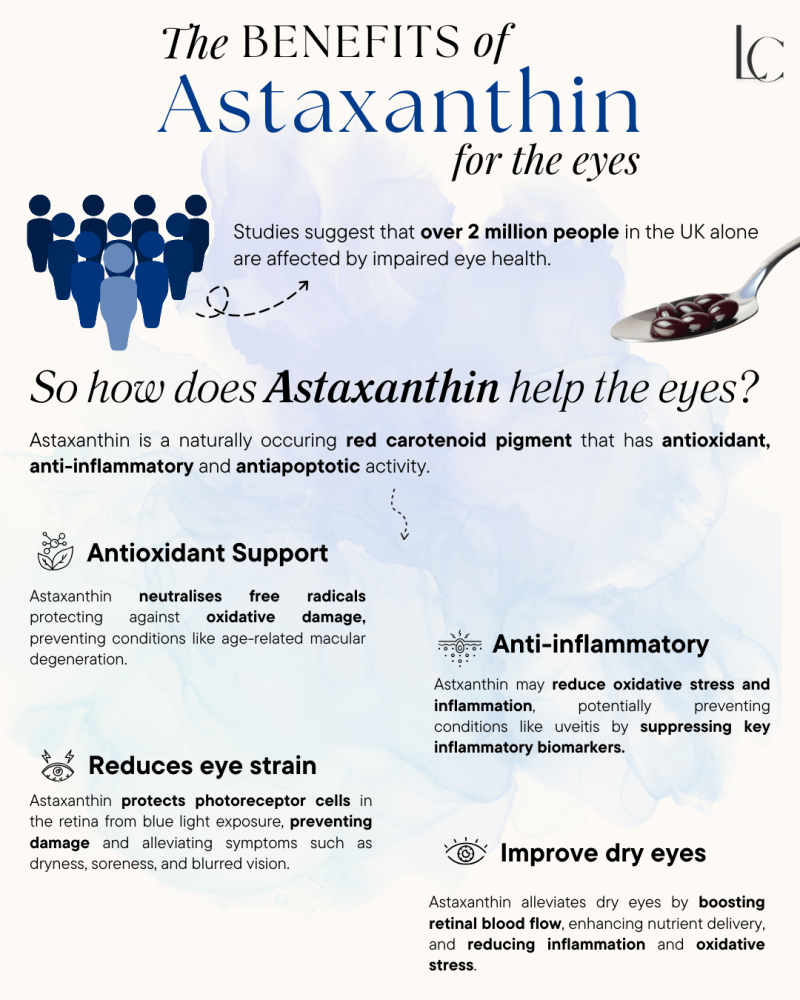
Disclaimer
This article is for informational purposes only and is not a substitute for medical advice. Consult your doctor or healthcare provider before starting any supplements, treatments, or remedies. Ensure a varied and balanced diet and a healthy lifestyle before considering supplements. Supplements should not replace a balanced diet.
References
- Giannaccare, G. et al. (2020) ‘Clinical applications of astaxanthin in the treatment of ocular diseases: Emerging insights’, Marine Drugs, 18(5), p. 239. doi:10.3390/md18050239.
- Atayik, M.C. and Çakatay, U. (2023) ‘Mitochondria-associated cellular senescence mechanisms: Biochemical and pharmacological perspectives’, Advances in Protein Chemistry and Structural Biology, pp. 117–155. doi:10.1016/bs.apcsb.2023.03.003.
- Ambati, R. et al. (2014) ‘Astaxanthin: Sources, extraction, stability, biological activities and its commercial applications—a review’, Marine Drugs, 12(1), pp. 128–152. doi:10.3390/md12010128.
- Davinelli, S., Nielsen, M. and Scapagnini, G. (2018) ‘Astaxanthin in skin health, repair, and disease: A comprehensive review’, Nutrients, 10(4), p. 522. doi:10.3390/nu10040522.
- Sun, K. et al. (2019) ‘Astaxanthin protects against osteoarthritis via nrf2: A guardian of cartilage homeostasis’, Aging, 11(22), pp. 10513–10531. doi:10.18632/aging.102474.
- Ciaraldi, T.P. et al. (2023) ‘Astaxanthin, a natural antioxidant, lowers cholesterol and markers of cardiovascular risk in individuals with Prediabetes and dyslipidaemia’, Diabetes, Obesity and Metabolism, 25(7), pp. 1985–1994. doi:10.1111/dom.15070.
- Ahmadi, A.-R. and Ayazi-Nasrabadi, R. (2021) ‘Astaxanthin protective barrier and its ability to improve the health in patients with covid-19’, Iranian Journal of Microbiology [Preprint]. doi:10.18502/ijm.v13i4.6965.
- Böhm, E.W. et al. (2023) ‘Oxidative stress in the eye and its role in the pathophysiology of ocular diseases’, Redox Biology, 68, p. 102967. doi:10.1016/j.redox.2023.102967.
- Giannaccare, G. et al. (2020) ‘Clinical applications of astaxanthin in the treatment of ocular diseases: Emerging insights’, Marine Drugs, 18(5), p. 239. doi:10.3390/md18050239.
- Cao, Y. et al. (2021) ‘Dietary astaxanthin: An excellent carotenoid with multiple health benefits’, Critical Reviews in Food Science and Nutrition, 63(18), pp. 3019–3045. doi:10.1080/10408398.2021.1983766.
- Lin, C.-W., Yang, C.-M. and Yang, C.-H. (2020) ‘Protective effect of astaxanthin on blue light light-emitting diode-induced retinal cell damage via free radical scavenging and activation of PI3K/AKT/NRF2 pathway in 661W Cell model’, Marine Drugs, 18(8), p. 387. doi:10.3390/md18080387.
- Zhao, Zhi-Chun et al. “Research progress about the effect and prevention of blue light on eyes.” International journal of ophthalmology vol. 11,12 1999-2003. 18 Dec. 2018, doi:10.18240/ijo.2018.12.20
- Shu, D. et al. (2023) ‘Role of oxidative stress in Ocular diseases: A balancing act’, Metabolites, 13(2), p. 187. doi:10.3390/metabo13020187.
- Sandmann, G. (2014) ‘Carotenoids of biotechnological importance’, Biotechnology of Isoprenoids, pp. 449–467. doi:10.1007/10_2014_277.
- Bjørklund, G. et al. (2022) ‘The role of Astaxanthin as a nutraceutical in health and age-related conditions’, Molecules, 27(21), p. 7167. doi:10.3390/molecules27217167.
- Janani, R. et al. (2021) ‘Astaxanthin mediated regulation of VEGF through HIF1Α and XBP1 signaling pathway: An insight from ARPE-19 cell and streptozotocin mediated diabetic rat model’, Experimental Eye Research, 206, p. 108555. doi:10.1016/j.exer.2021.108555.
- Hormozi, M., Ghoreishi, S. and Baharvand, P. (2019) ‘Astaxanthin induces apoptosis and increases activity of antioxidant enzymes in LS-180 cells’, Artificial Cells, Nanomedicine, and Biotechnology, 47(1), pp. 891–895. doi:10.1080/21691401.2019.1580286.
- Park, J.H. et al. (2018) ‘Anti‐inflammatory effect of astaxanthin in phthalic anhydride‐induced atopic dermatitis animal model’, Experimental Dermatology, 27(4), pp. 378– doi:10.1111/exd.13437.
- Yang, M. and Wang, Y. (2022) ‘Recent advances and the mechanism of Astaxanthin in Ophthalmological Diseases’, Journal of Ophthalmology, 2022, pp. 1–11. doi:10.1155/2022/8071406.
- Miller, J.R. and Hanumunthadu, D. (2022) ‘Inflammatory eye disease: An overview of clinical presentation and Management’, Clinical Medicine, 22(2), pp. 100–103. doi:10.7861/clinmed.2022-0046.
- Lai, T.-T., Yang, C.-M. and Yang, C.-H. (2020) ‘Astaxanthin protects retinal photoreceptor cells against high glucose-induced oxidative stress by induction of antioxidant enzymes via the PI3K/AKT/Nrf2 pathway’, Antioxidants, 9(8), p. 729. doi:10.3390/antiox9080729.
- Sekikawa, T. et al. (2023) ‘Effects of diet containing astaxanthin on visual function in healthy individuals: A randomized, double-blind, placebo-controlled, parallel study’, Journal of Clinical Biochemistry and Nutrition, 72(1), pp. 74–81. doi:10.3164/jcbn.22-65.
- Ming Yang, Yanling Wang, "Recent Advances and the Mechanism of Astaxanthin in Ophthalmological Diseases", Journal of Ophthalmology, vol. 2022, Article ID 8071406, 11 pages, 2022. https://doi.org/10.1155/2022/8071406.
- Nair, A. et al. (2023) ‘Astaxanthin as a king of ketocarotenoids: Structure, synthesis, accumulation, bioavailability and antioxidant properties’, Marine Drugs, 21(3), p. 176. doi:10.3390/md21030176.
- Radwan, B. et al. (2023) ‘Uptake and anti-inflammatory effects of liposomal astaxanthin on endothelial cells tracked by Raman and fluorescence imaging’, Microchimica Acta, 190(8). doi:10.1007/s00604-023-05888-8.
- Brendler, T. and Williamson, E.M. (2019) ‘Astaxanthin: How much is too much? A safety review’, Phytotherapy Research, 33(12), pp. 3090–3111. doi:10.1002/ptr.6514.
By Saarah Mengrani, Msc Biotechnology

